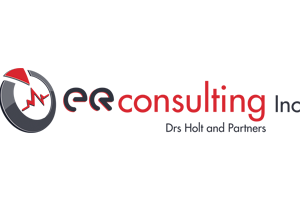Understanding the ER
In an emergency, no patient wants to wait to be seen. It is indeed the most common complaint from patients that waiting times are too long. Waiting times, however, are a complex equation to solve from both a medical, administrative and cost perspective, considering patient satisfaction and overall experience.
ER Consulting Inc has implemented numerous initiatives to assist in reducing waiting times and currently has one of the shortest average waiting times in the industry. Soon ER Consulting Inc will be launching a new system called EffortlessER, designed exclusively to reduce waiting times and improve overall throughput times.
Waiting times are challenging to manage for many reasons. The very nature of emergencies is such that they are unplanned and therefore planning staffing requirements is always a challenge. Seasonality, surge periods and “how sick” people are, all influence waiting times. With significant pressure to try and reduce costs, human resources need to be carefully managed to avoid staff burnout and fatigue-induced errors.
To cater for sudden increases in volumes of patients, ER Consulting Inc has a second on-call system that gets activated. In addition, a senior telephonic advisory service assists with logistical support. In rare cases of extreme overload, other resources are mobilised from our deep doctor resource.
Medically, the sickest/most injured patients must be seen first. The process to assess ‘how sick’ a patient is, is called triage. Triage is a quick process performed by a nurse when you arrive at an emergency unit. Triage will objectively categorise you into one of 4 colour groups (Green, Yellow, Orange, Red), with green being the most minor and red the most severe. Patients are then seen in order of medical severity, sickest/most injured first.
Triage can be a source of frustration for patients as they may feel that it pushes them down the queue of those waiting to be seen. Indeed, this is the case if someone sicker or more injured arrives after you have been triaged with a “higher colour” than you. ER Consulting Inc employs the triage system to ensure that patients are treated in order of medical priority. To mitigate the wait times for more minor cases, a number of initiatives are currently being tested. These include the Effortless ER system, improved laboratory and radiology turnaround times as well as various ergonomic changes to the facilities.
The severity of the emergency dictates what to bring with you. If you feel that you have an emergency that is life or limb-threatening then do not hesitate, get to the emergency department as soon as possible. Anything left behind can always be retrieved later by a family member or friend. Patients should be reassured that no patient will ever be refused treatment for a life or limb-threatening injury while waiting for ANY details of ANY kind.
In an emergency, the hospital and the doctors will want to know the following:
-
- Your name
-
- Your ID
-
- Your medical aid card
-
- Your next of kin
- Your usual doctor
If you think you may be admitted, an overnight bag with a change of clothes, underwear, gown and slippers, and toiletry bag should be more than enough.
The new Effortless ER System aims to eliminate the need to remember any of your demographic information and will reduce waiting times. Watch this space!
There are several types of billing codes. Billing codes can be for Hospital Services, Doctor Services and Stock and Consumables. In the emergency unit, you may come across all three code types.
Hospitals own Emergency units. The hospitals generally provide the facility, equipment, nursing and administration in an emergency unit. The hospital will always charge you a “Facility Fee” when you use an emergency unit over and above the doctor’s fees.
The doctoring of the emergency facility is provided by an outsourced doctor group (ER Consulting Inc being the largest in South Africa).Specialists who work in a hospital are not employed by the hospital either (this includes X-ray and Pathology Services). When you attend an emergency unit, therefore, you may receive several accounts from the different service providers.
Billing codes are standardised codes for various consultations and procedures performed by multiple service providers. Codes are useful for the funders (medical aids) to understand what is being claimed by the doctors accurately. Doctors and hospitals are guided as to what to charge for each code by various organisations, however, a doctor is allowed by right to choose his/her fee for any code.
The codes charged to you will appear on the account you receive from each service provider.
For more information on ER Consulting Inc’s billing, click here.
Emergencies are often overwhelming. This means that all your focus is on getting the care you need as quickly as possible. Often it is difficult in a crisis to pay attention to all the detail and information many people are giving you. You are also often concerned about your or your loved one’s condition, and therefore not listening to all the information you are given. Doctors and nurses also often use medical language that is not clear, and if they are busy, this often comes out fast.
Despite the confusing, overwhelming environment of the emergency department, it is vital that you understand everything that is being asked of you and done to you! Don’t be afraid to ask if you don’t understand. The doctors, nurses and administrators are required to give you all the information you need to make an informed decision.
